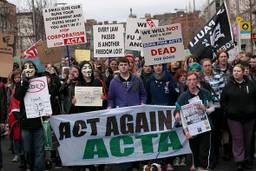Attorney General Eric Holder and New Orleans Police Department this afternoon announced a comprehensive reform agreement for the city’s troubled police force. Among a long list of proposed changes, officers will be given more thorough training on the use of force, and a special unit will be created to review uses of force. Interviews with suspects will be videotaped to monitor for witness intimidation. Bias against women will be more closely monitored (in the past, the department has been accused of systematically playing down sexual assault and domestic violence cases).
A federal judge must approve the plan before the city can begin to implement it. The Department of Justice will oversee the implementation, which the city hopes to accomplish within the next four years. The agreement is known as a consent decree, a tool used by the Department of Justice with police forces from Detroit to Los Angeles to the state of New Jersey. But the New Orleans agreement is one of the most extensive consent decrees undertaken by the Department of Justice.
The city’s police force was investigated by the federal government in 2010, resulting in a DoJ report in spring 2011 that found misconduct and corruption in most of the police department’s operations. “Basic elements of effective policing— clear policies, training, accountability, and confidence of the citizenry—have been absent for years,” the report says. “While the majority of the force is hardworking and committed to public safety, too many officers of every rank either do not understand or choose to ignore the boundaries of constitutional policing.”
The aftermath of Hurricane Katrina brought the institutional brokenness of the police force to the national spotlight. As looters moved into the streets and the city moved closer to chaos, officials looked to be loosing control. An order allegedly circulated throught the police force authorizing officers to shoot any looters. And then came a series of shootings and cover ups.
Four days after the storm, Police officers shot Henry Glover and then burned his body and attempted to cover it up. In 2010, three cops were convicted in that incident. Two days later came the Danziger Bridge shooting—two unarmed civilians dead and five wounded by police, who then attempted to mislead investigators. Earlier this year, five former New Orleans police officers received prison sentences for both the shootings and the subsequent cover up.
The problems within the force during Katrina are indicative of a long-term underlying breakdown in police protocol and conduct that goes back long before the hurricane. The mid-1990s saw the height of police abuse. In 1993, 17 officers were arrested and charged with crimes. Later in the decade, six officers would be apprehended for their participation in a cocaine ring.
Over the same time period, two officers were sentenced to death row. In 1994, Len Davis ordered a hit on a woman who filed a brutality compaint against him. In 1995, Antoinette Frank robbed a Vietnamese restaurant while off duty, killing several members of the owner’s family and her former partner, who was working at the restaurant as private security. She was identified when she returned to the scene in her uniform to help the investigation. A 1996 New York Times Magazine article commented, “In recent years the department has behaved less like a police force than a loose confederation of gangsters terrorizing sections of the city.”
The rampant misconduct has quelled considerably since. However, as the DoJ report last year made clear, smaller issues have worked their way into the everyday practices of the police. The DoJ report stated, “Past reform efforts underscore the need for long-term commitment and meaningful community engagement to fundamentally and permanently transform the Department.” As per the consent decree, the federal oversight will end once the police force achieves two consecutive years without any incidents.
Isaac Dalke is a summer 2012 In These Times editorial intern.



